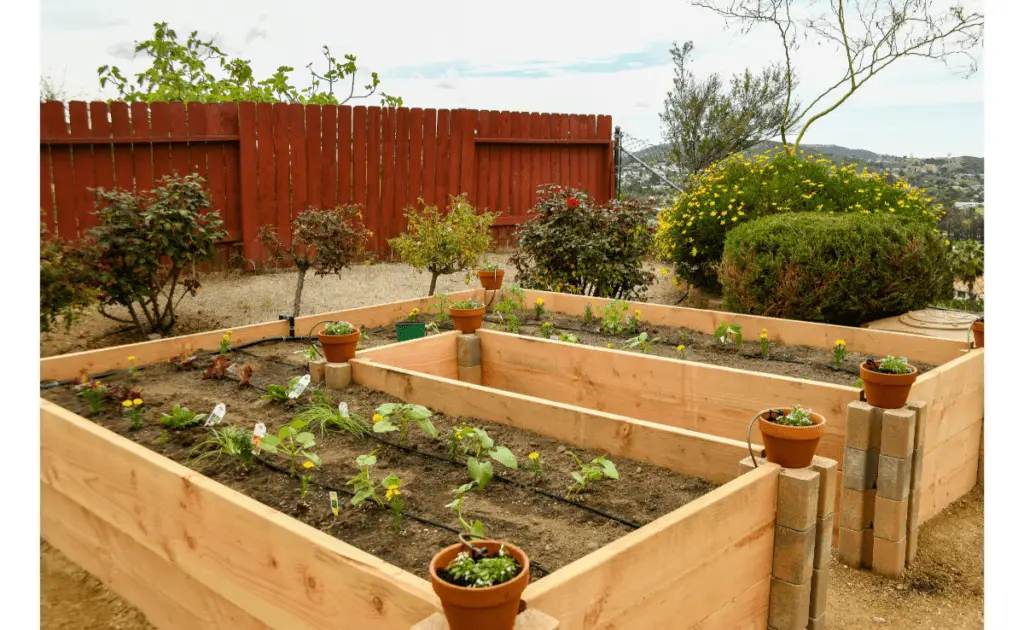
Raised garden beds can help with drainage, weed control, and plant health. If you’re interested in giving raised garden beds a try, read on for some helpful tips from a professional gardener.
Raised garden beds are simply raised planters that are used to grow plants. They come in different sizes, ranging from small to large and might be made of wood, plastic, or concrete. Raised beds can be bought at most garden supply stores and many hardware stores.
How to prepare a raised garden bed
First, make sure to start with a level area. You will want this for drainage purposes. Next, prepare your bed for planting by laying down a layer of newspaper or cardboard. This will help the soil stay moist and prevent it from getting muddy when you plant your seedlings. Then, mix in compost and soil with a trowel or shovel to create your raised garden bed.
Now it’s time to add plants. If you are using a plastic garden cover, place it over the top of your raised garden bed so that it can catch some rainwater and provide some shade during the summer months. If you are using an old piece of carpeting instead of a garden cover, make sure to lay down burlap or mulch on top so that water doesn’t seep through the ground into your plants’ roots.
Once your raised garden bed is complete, fill in any holes or gaps with more soil and plant whatever you want!
Benefits of raised garden beds
Raised garden beds are beneficial to your plants and you. With a raised garden bed, water can easily drain away from the plants’ roots, making it easier to reduce the risk of overwatering or underwatering. If you have poor drainage in your garden bed, some of your peat moss or compost might not get enough oxygen. This can result in anaerobic soil conditions which can cause your plants to suffer from root rot diseases.
A raised garden bed also helps with weed control and plant health by reducing compaction. Instead of compacting into one spot, the soil underneath a raised garden bed is dispersed across its surface resulting in better air circulation and less weed competition for nutrients and space.
If you have limited gardening space, a raised garden bed gives you more options for where to plant. You can put your raised garden bed on either level ground or uneven ground without having to worry about leveling the area first. Check out our How to Create a Garden in a Small Space for more tips on using your limited space.
Different types of raised garden beds
There are plenty of different options when it comes to choosing a raised garden bed. There are many different types, including:
- – Permanent raised beds
- – Wood or plastic raised garden beds
- – Raised vegetable gardens
- – Raised flower gardens
- – Raised herb gardens
- – Exposed aggregate surface garden bed
Looking for the best wood for your garden bed? Check out this post!
Tips on how to use your new garden bed.
When building your own raised garden bed, it is important to consider the location where you are going to place it. This will help determine what type of materials you will need and how long you will have to wait before planting in it.
It is also helpful to think about the height of your bed when deciding on size and materials. A taller bed typically means more plants can be planted per square foot, which allows for less weeding and can feed everyone in the household. However, a shorter bed may be easier to maintain. If so, you likely won’t need as much material as a taller one would require.
Next, decide what your goals for your new garden are. If you plan on starting with seeds or seedlings, then you should measure the distance from the ground to the base of your plants when determining how deep to dig into the soil. Those who want their vegetables or flowers to grow quickly should look at how many inches they will have between their plants and any nearby walls or fences so that they don’t cause damage or deter their growth too much.
Growing vegetables in your garden bed
Raised garden beds are a great way to grow vegetables in your backyard. You can grow vegetables by putting a bed in the ground or on top of the ground. Placing your bed on the ground provides full access for watering and harvesting, but it is not ideal for areas with limited space like patios. We recommend placing your beds underground so you can enjoy free access to water and weed control without inconveniencing anyone around you.
To place a raised garden bed, start by digging a hole twice as wide as what you plan to fill with garden soil. Dig down about two feet into the hole and create drainage holes at each end of the base of the bed. This will help prevent any water from pooling around the base of your raised bed, which may cause overwatering and disease issues. With proper drainage, plant roots will be able to spread out more easily while still providing nutrients to the plants above.
Fill up the bottom one-third of your hole with organic compost or peat moss before adding clay potting mix. Add an inch layer of topsoil on top of this mixture before placing a layer of gravel at least 2 inches deep over it. If you have time, add another layer of mulch or compost over this layer before filling in any remaining spaces with potting mix or soil. It’s important that raised garden beds have good drainage because water sitting around for too long can lead to root rot, killing most plants quickly.
There are many benefits to growing your own vegetables in raised garden beds. This article explains the different types of raised garden beds and what they mean for your garden.
But, keep in mind that the size of your raised bed will impact how much produce you can grow. So, if you have a limited space or want to grow vegetables or flowers in an area that gets a lot of sunlight, make sure you choose a larger raised bed that can accommodate the plants you want to grow.
